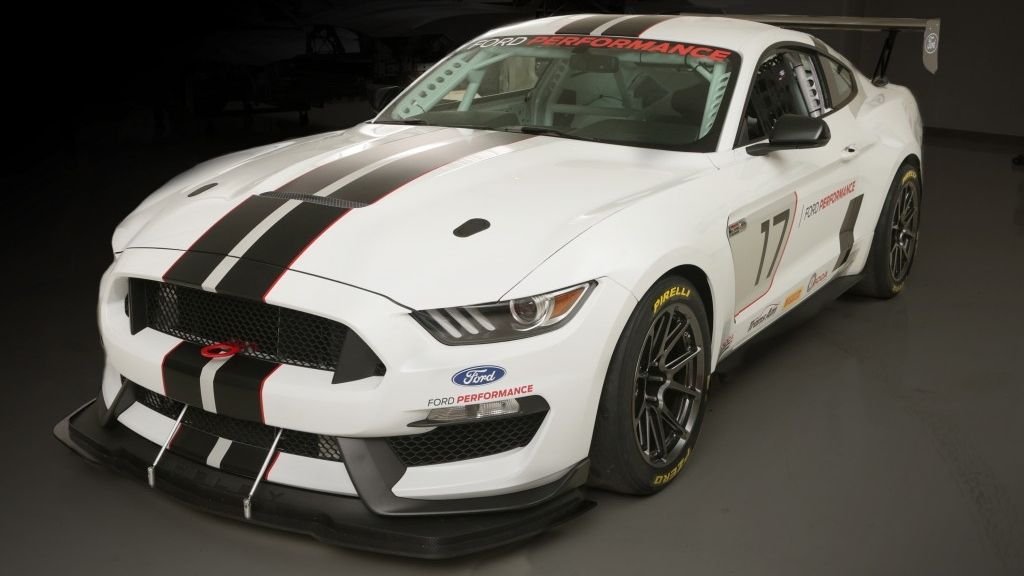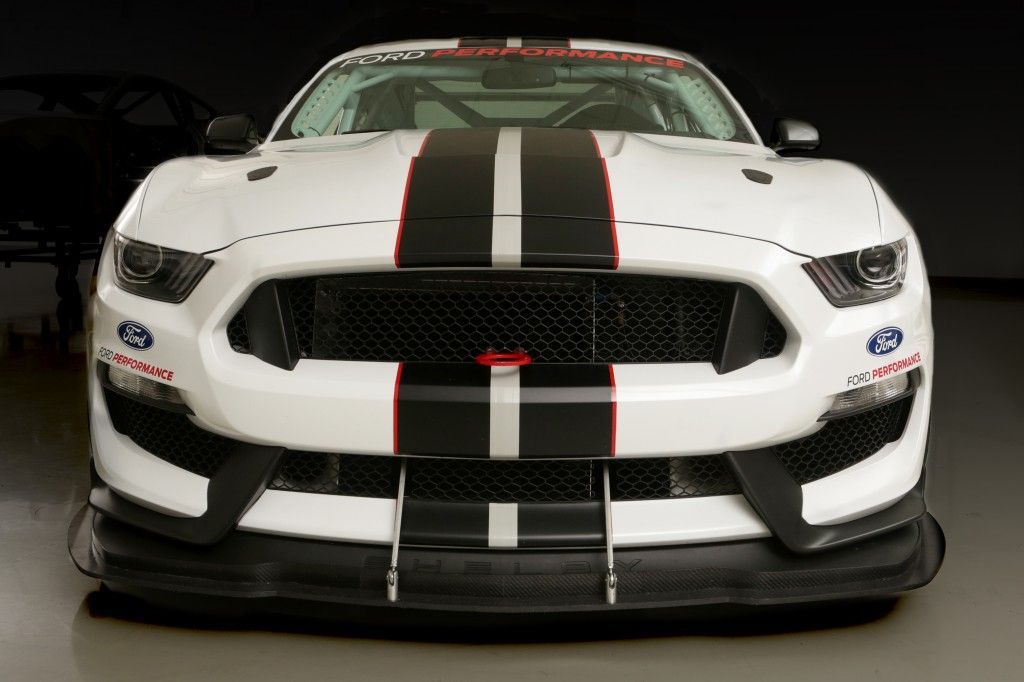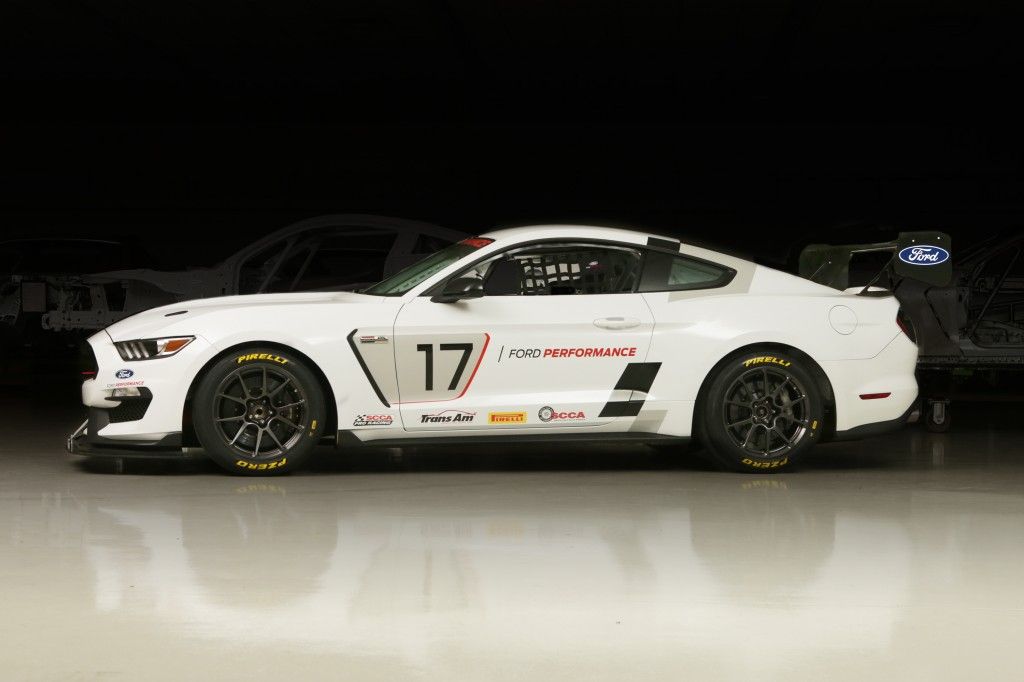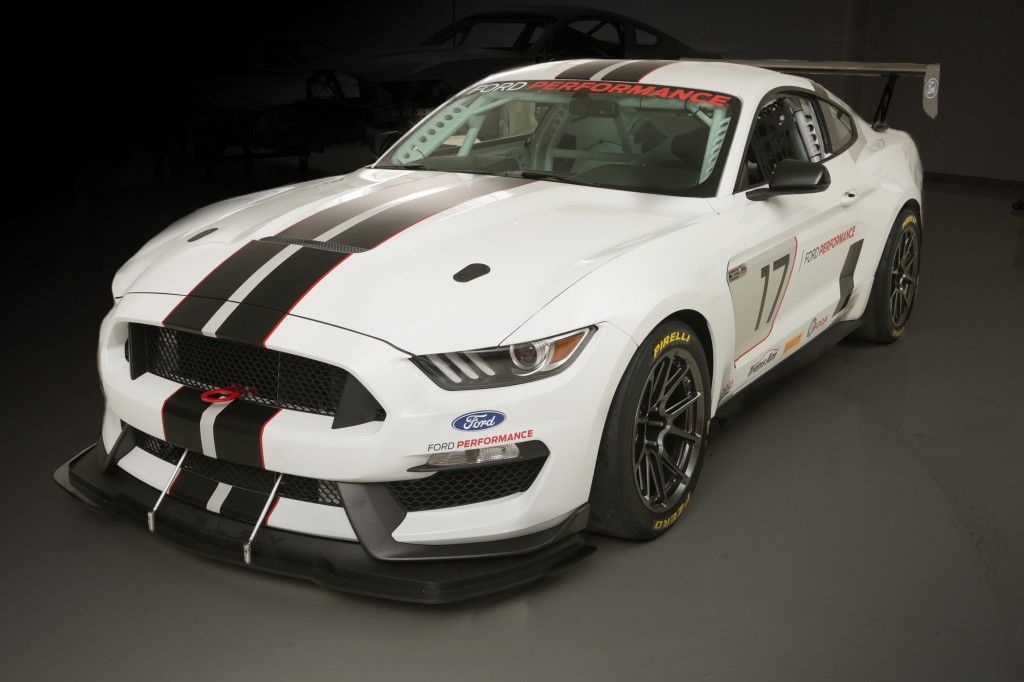Unveiled for the 2015 model year, the sixth-generation Ford Mustang is the first of its kind to feature an independent rear suspension. It's also the first 'Stang in more than two decades to feature a turbocharged four-cylinder engine after Ford added a 2.3-liter EcoBoost to the already familiar 3.7-liter V-6 and 5.0-liter V-8. Additionally, the sixth-gen pony is the first-ever global Mustang, being sold in dealerships in Europe and Asia, as well as certain countries in Africa and Oceania. Much like its predecessors, the current Mustang also spawned a number of higher performance Shelby versions and race-spec models.
The Shelby FP350S is the latest to join the Mustang stable of track-only cars. Developed by Ford Performance, it's the third race-spec version of the sixth-generation Mustang, alongside the IMSA Continental Tire SportsCar Challenge championship-winning Shelby GT350R-C and the recently unveiled GT4. The new race car is heavily based on the Shelby GT350R-C and will help the new Mustang expand in other racing series', including the Trans Am (TA3 and TA4 classes), the NASA (National Auto Sorts Association), and SCCA club racing (T1 and T2 categories).
“Our goal has always been to provide those who want to race with equipment that enables them to compete and win,” said Dave Pericak, global director of Ford Performance. “Shelby FP350S is our latest example.”
The new Shelby FP350S will go on sale in 2017 and will be made available through Ford dealerships throughout the United States.
Continue reading to learn more about the Shelby Mustang FP350S.
2017 Shelby Mustang FP350S
- Make: Array
- Model: 2017 Shelby Mustang FP350S
- [do not use] Vehicle Model: Array
Exterior
Not surprisingly, the FP350S is almost identical to the Shebly GT350R-C and Mustang GT4, especially up front. If it weren't for the additional splitter struts and minor modifications in the bumper, it would be very difficult to set them apart. The splitter appears to extend farther below the apron on the FP350S compared to the GT350R-C, while the missing canards on each side of the bumper sets it apart from the GT4-spec model. The splitter, by the way, is made from carbon-fiber so it doesn't add a lot of weight to the car.
Moving onto the sides, the new race car is once again identical to the race-spec coupe that Ford launched earlier in 2016. The wheels are the only elements that are different, but not by much. The rims are actually pretty close to those seen on the Shelby GT350R-C, only finished in black and wrapped in Pirelli rubber instead of Continental. The standard rollers measure 19 inches front and rear, but customers can opt for 18-inch forged wheels.
It's around back where the FP350S is a more significant departure from its sibling, mostly thanks to its larger wing. Also made from carbon-fiber, it is bigger and sits higher than the wing Ford developed for the Mustang GT4 car. By comparison, the GT350R-C's is significantly smaller and more of the spoiler variety.
Finally, Ford also offers a Shelby FP350S custom graphics package that includes double racing stripes from the nose to the trunk lid, vertical stripes on the doors, and "Ford Performance" logos and lettering.
Interior
Note: Ford Shelby GT350 Mustang interior shown here.
Although Ford didn't publish pictures of the interior, it should be based on the Shelby GT350 and fitted all the features required for professional racing in the United States. Ford Performance says that the cockpit comes with an FIA-compliant roll cage, a Sparco, FIA-compliant racing seat with six-point harness, and a quick-release steering wheel. The latter makes getting in and out of the car a lot easier, but it also helps in the event of a crash. The coupe is also equipped with a MOTEC data acquisition system, enabling the driver (or the crew in the pit) to analyze performance. Like most race cars, I also expect the FP350S to have a simple display instead of the traditional instrument cluster and a revised center stack with additional buttons, switches, and knobs.
Drivetrain
Under the skin, the FP350S received a lot more modifications, starting with a revised unibody chassis with seam welding. The 5.2-liter, flat crank plane V-8 was specifically prepared by Ford Performance Parts, which also added a 12-quart-deep sump racing oil pan and oil cooler. The V-8 mates to a Tremec 3160 manual transmission with integral oil pump and shifter, and a Torsen differential with a 3.73 rear final drive ratio. The standard exhaust was also ditched in favor of a race-tuned unit.
The chassis also includes race-spec camber plates, Sachs coilover dampers, an adjustable Ford Performance steering system, and Ford Performance ABS. Stopping power comes from AP Racing Radi-CAL six-piston calipers with 372mm (14.6-inch) rotors at the front and AP Racing four-piston clamps with 340mm (13.4-inch) rotors to the rear. The race-spec braking system is being kept at optimum temperatures by beefed-up racing cooling ducts.
There's no word on horsepower and performance, but these figures aren't as critical as the power-to-weight ratio. Unfortunately, Ford had nothing to say about that. For reference, the road-going GT350 cranks out a whopping 526 horsepower and 429 pound-feet of torque and needs less than 3.5 seconds to hit 60 mph from a standing start. The FP350S might not be that powerful, but it should be quicker due to the revised aerodynamics and weight-reducing measures.
|
Engine |
5.2-liter, flat crank plane V-8 |
|
Horsepower |
526 HP (est.) |
|
Torque |
429 Lb-FT (est.) |
|
Transmission |
Tremec 3160 manual |
|
0 to 60 mph |
3.5 seconds (est.) |
Competition
Due to the fact that it will compete in three different series, the Trans-Am, SCCA, and NASA, the Shelby FP350S will be raced against a wide variety of vehicles. In Trans Am, the Mustang will tackle the TA3 and TA4 classes. In the former, competition will come from Trans Am versions of the BMW M3, Dodge Viper, and Chevrolet Corvette among others. In TA4, a category that the Mustang dominated and won easily in 2016, its main competitor will be Chevrolet Camaro. The Mustang and Camaro will race against each other in the SCCA and NASA series too, which has been a tradition over the past few years.
Dodge Challenger SRT Trans Am
Although the Challenger was developed for the higher TA2 class, it will still run against the Mustang on the race track, as the stallion-badged coupe runs in this category too. At the same time, it's a good alternative for drivers who want something different than the popular Ford Mustang and Chevy Camaro. A bit more aggressive as far as styling goes, the race car is based on the production Challenger SRT, but features a lowered engine hood, a massive splitter under the bumper, and a massive wing around back. The SRT Trans Am gets it juice from one of the Dodge's Hemi V-8 engines, but as usual in-depth details are being kept under wraps.
Learn more about the Dodge Challenger SRT Trans Am here.
Conclusion
The previous-generation Mustang was quite the successful race car, with both the FR500C and Boss 302 winning numerous racer and championships across North America. With a new Mustang that's lighter, uses an independent rear suspension, and better technology, Ford aims even higher. The sixth-gen pony is already a championship-winning race car thanks to the Shelby GT350R-C, but Ford won't stop here. With the Mustang GT4 set to hit race tracks in Europe too, the FP350S give Ford enthusiasts the right weapon in gentleman racing series such as the Trans Am, SCCA, and NASA.








